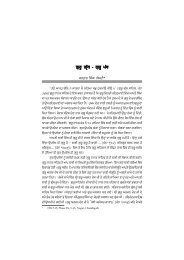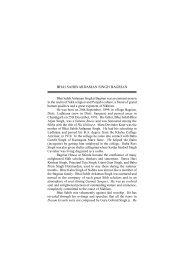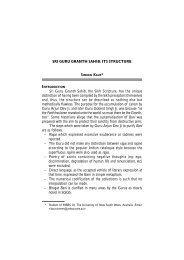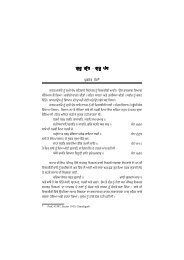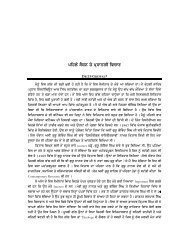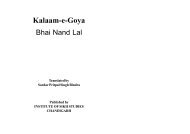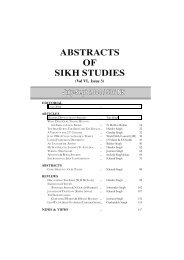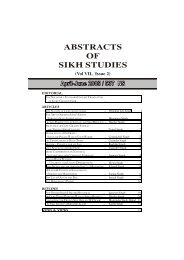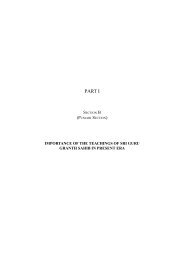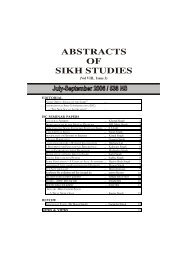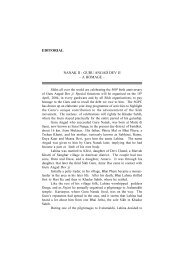You also want an ePaper? Increase the reach of your titles
YUMPU automatically turns print PDFs into web optimized ePapers that Google loves.
6ABSTRACTS OF SIKH STUDIES : JAN-MARCH <strong>2006</strong> / 537-38 NSthe Panth, unless its underlying centrifugal force is matched by acentripetal force <strong>of</strong> equal intensity. The proposed International <strong>Sikh</strong>Confederation (ISC) is an answer to this situation, and has not come aday too soon.The problem is aggravated by the existence <strong>of</strong> schisms and thethreat <strong>of</strong> new ones, the mounting list <strong>of</strong> unsolved ideological issuesand challenges to Rahit Maryada and <strong>Sikh</strong> identity. No responsible<strong>Sikh</strong> can close his eyes to this extremely disturbing situation, and theconsequent need for a central authority to deal with it.Even a cursory look at the <strong>Sikh</strong> history makes it abundantly clearthat our community cannot do without guidance <strong>of</strong> a responsible centralauthority. During the Guru period, this was provided by the Gurusthemselves, and history is witness to the fact that Guru Nanak infuseda new spirit <strong>of</strong> freedom and self-respect in a society completelydemoralised and enslaved for centuries. And by the time <strong>of</strong> GuruGobind Singh a new proud, powerful and self-reliant nation committedto the cause <strong>of</strong> freedom, justice, equality and service to the poor andthe weak, had been created. In their march towards glory and humandignity, the Gurus always involved their <strong>Sikh</strong>s in all major decisions,imparting to them training in leadership. The sangats established byGuru Nanak and his successors, had full authority from the verybeginning. There are instances galore to show that Guru Gobind Singhencouraged his <strong>Sikh</strong>s to make decisions even in disciplinary matters,which sometimes did not spare the Guru himself. And eventuallywhen he pronounced the end <strong>of</strong> personal Guruship and declared GuruGranth Sahib as the living spiritual Guru <strong>of</strong> the <strong>Sikh</strong>s, he passed onthe responsibility for all temporal affairs to the Khalsa.Subsequent history also yields the same lesson. So long as thePanth or the collectivity <strong>of</strong> the <strong>Sikh</strong> community discharged itsresponsibility and provided the leadership, its ascendancy continued.The eighteenth century was the most challenging period <strong>of</strong> <strong>Sikh</strong> history.The <strong>Sikh</strong>s not only survived, but managed to establish, first principalitiesunder popular leaders, and later a <strong>Sikh</strong> empire in the north India. Thatbecame possible because <strong>of</strong> the collective leadership and theirdecisions known as gurmattas.On the other hand, when the Panth relaxed and neglected itsresponsibility, ambitious self-seeking individuals took over. This led



